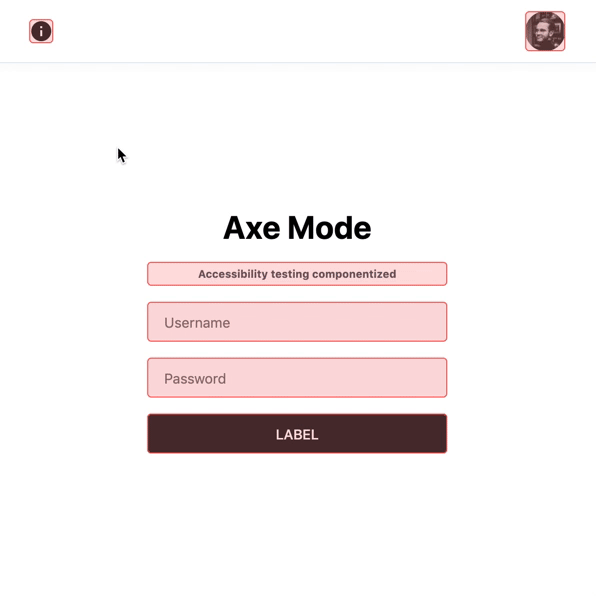axe-mode
v0.0.1-alpha.3
Published

Downloads
48
Readme
axe-mode
WIP
This project is an attempt to leverage axe-core in a component to find accessibility violations and provide information on how to resolve them.
Currently, this only works for React.
See it in action on CodeSandbox.

Usage
Install the library:
yarn add axe-mode -Dor
npm install axe-mode --save-devImport the component and wrap it around your application or any other component tree you would like to validate:
import AxeMode from 'axe-mode';
function App() {
return (
<AxeMode disabled={process.env.NODE_ENV !== 'development'}>
<h1 aria-expanded="123">Hello world!</h1>
</AxeMode>
);
}Launch your application as usual. Any violations of accessibility will show up as an overlay. If you wish to interact with your application, overlays can be toggled on/off with Ctrl + I.
Note: Make sure to only run in production by using the disabled prop with your environment variable.
Development
TSDX scaffolds your new library inside /src, and also sets up a Parcel-based playground for it inside /example.
The recommended workflow is to run TSDX in one terminal:
npm start # or yarn startThis builds to /dist and runs the project in watch mode so any edits you save inside src causes a rebuild to /dist.
Then run the example inside another:
cd example
npm i # or yarn to install dependencies
npm start # or yarn startThe default example imports and live reloads whatever is in /dist, so if you are seeing an out of date component, make sure TSDX is running in watch mode like we recommend above. No symlinking required, we use Parcel's aliasing.
To do a one-off build, use npm run build or yarn build.
To run tests, use npm test or yarn test.

